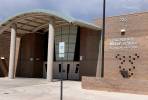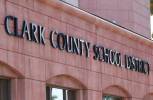Clark County School Board mulls year-round calendars for crowded campuses
A bleak picture of too many elementary school students and not enough seats was painted Thursday by the Clark County School District, which released a detailed report on its crowded campuses.
Nine-month elementary schools have about 20,000 more students than seats. All but three of the district’s 217 elementary schools use the nine-month calendar.
“Does anyone have any aspirin or heart pills, because I feel my heart beating out of my chest,” said Clark County School Board member Deanna Wright after receiving the report.
Elementary schools are an average of 16 percent over their student capacities, and that will only worsen, according to Rick Baldwin, district director of demographics and zoning. Elementary school enrollment has grown 2 percent since the start of the school year, which Baldwin expects to continue.
“It’s cause for major concern,” he said. “Growth seems to be returning to the Las Vegas Valley, rivaling what we were seeing pre-recession.”
And people are coming to unexpected places, he said. The area experiencing the largest population boom is in North Las Vegas, adjacent to Interstate 15 directly to the west, Baldwin said.
To bridge the wide gap between the number of students and seats, the district has been using 1,282 portable classrooms this year, hauling in an additional 92 more since the start of the school year to meet state requirements for 21-student kindergarten classes.
“Be careful what you wish for,” said board member Chris Garvey, who is supportive of the state for funding smaller kindergarten classrooms but realizes it has created a need for dozens of classrooms that schools simply don’t have.
Looking at what-ifs, the district’s elementary schools would shift from a seat shortage to a surplus if they switched all campuses to year-round calendars, Baldwin said.
The district then would have 12,000 more seats than students and be about 7 percent under capacity instead of 16 percent over capacity.
Superintendent Pat Skorkowsky has said drastic actions such as this might be necessary in the absence of a bond to provide billions of dollars for school construction and renovations.
Thursday wasn’t a time for decisions, however, according to Associate Superintendent Joyce Haldeman, who also is the district’s lobbyist in the Legislature.
“We’re raising the issues. We’re not resolving them, not right now,” Haldeman said to School Board members. “But you’re going to have a lot of decisions to make.”
The School Board will be receiving regular reports on issues surrounding school crowding, maintenance and conditions, she said.
“I think this is the best way to go about tackling the challenges before us,” board President Erin Cranor said.
The regular reports are part of a new plan to gain support early for school construction and renovation funding.
The School Board decided not to pursue a 20-year bond in the November 2014 election, acknowledging that it probably would fail.
The district made a similar plea for a $669 million property tax increase in 2012, but voters shot it down 2 to 1.
District officials placed much of the blame on not educating voters early about the need, a mistake School Board members said they can’t repeat.
“The reality is we’re facing very difficult times,” said board member Carolyn Edwards, emphasizing how the dire situation and statistics need to be consolidated into a “relatively brief” document for the public.
Contact Trevon Milliard at tmilliard@reviewjournal.com or 702-383-0279. Find him on Twitter: @TrevonMilliard.




























